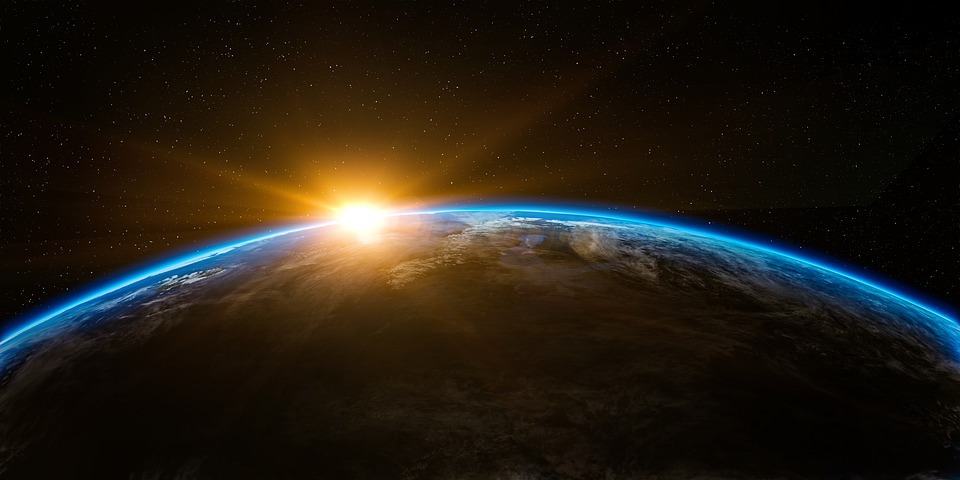Detecting asteroids early before they can collide with the planet is one of the primary defenses that Earth has against this threat. And with constant vigilance from multiple observatories across the globe, experts have been cataloging these heavenly bodies on a Risk List.
14 days ago, another asteroid was added to the pile. Labeled as a 2019 SU3, the space rock has a chance to collide with our planet in the next 45 to 100 years.
Experts wrote that this asteroid has a 1 out 147 chance of hitting Earth as various factors are affecting its current trajectory. Among them are keyholes, regions in space where a planet’s gravitational pull has a lot of influence around its vicinity.
Asteroid 2019 SU3 isn’t all that big
So what happens if the asteroid struck Earth? Well, nothing. 2019 SU3 has an estimated diameter size of about 46 feet. At this size, it’s not expected to create that much damage. If it does any damage at all, IBT reported.
This is due to the fact that the asteroid will likely burn up as it enters Earth’s atmosphere, neutralizing the threat. Asteroids having a size of 82 feet and below are considered non-threatening.
For the space rock to do significant damage, an asteroid will have to be at least half a mile in size. Bumping that to one mile and a half and the devastation is heightened to a considerable degree, potentially killing thousands of people if it connects with a major city, Express reported.
Asteroid detection is our best chance
This is why detection is so important for humanity, as identifying and tracking an asteroid’s trajectory, will give experts the time to prepare for the collision. One of the things that have been proposed by NASA is to employ nuclear weapons against such threats, labeling the method as 10 to 100 times more potent than other non-nuclear means.
This could be used in multiple factors like detonating the bomb on the asteroid’s surface in an attempt to burn it up into smaller pieces so the atmosphere can handle the rest. Blowing up the bomb near the asteroid would also affect its trajectory and miss Earth entirely. NASA plans to bolster its asteroid detection capabilities come 2025, with its renewed effort fueled by OK 2019, a space rock that nearly collided with Earth months prior.



 SpaceX Starship Explodes in Texas During Test, Citing Nitrogen Tank Failure
SpaceX Starship Explodes in Texas During Test, Citing Nitrogen Tank Failure  FDA Adds Fatal Risk Warning to J&J and Legend Biotech’s Carvykti Cancer Therapy
FDA Adds Fatal Risk Warning to J&J and Legend Biotech’s Carvykti Cancer Therapy  NASA Resumes Cygnus XL Cargo Docking with Space Station After Software Fix
NASA Resumes Cygnus XL Cargo Docking with Space Station After Software Fix  Kennedy Sets September Deadline to Uncover Autism Causes Amid Controversy
Kennedy Sets September Deadline to Uncover Autism Causes Amid Controversy  Lab-grown meat: you may find it icky, but it could drive forward medical research
Lab-grown meat: you may find it icky, but it could drive forward medical research  Astronomers have discovered another puzzling interstellar object − this third one is big, bright and fast
Astronomers have discovered another puzzling interstellar object − this third one is big, bright and fast  Ancient Mars may have had a carbon cycle − a new study suggests the red planet may have once been warmer, wetter and more favorable for life
Ancient Mars may have had a carbon cycle − a new study suggests the red planet may have once been warmer, wetter and more favorable for life  Neuralink Expands Brain Implant Trials with 12 Global Patients
Neuralink Expands Brain Implant Trials with 12 Global Patients  Trump Signs Executive Order to Boost AI Research in Childhood Cancer
Trump Signs Executive Order to Boost AI Research in Childhood Cancer  Neuren Pharmaceuticals Surges on U.S. Patent Win for Rare Disorder Drug
Neuren Pharmaceuticals Surges on U.S. Patent Win for Rare Disorder Drug  Blue Origin’s New Glenn Achieves Breakthrough Success With First NASA Mission
Blue Origin’s New Glenn Achieves Breakthrough Success With First NASA Mission  NASA Astronauts Wilmore and Williams Recover After Boeing Starliner Delay
NASA Astronauts Wilmore and Williams Recover After Boeing Starliner Delay 































